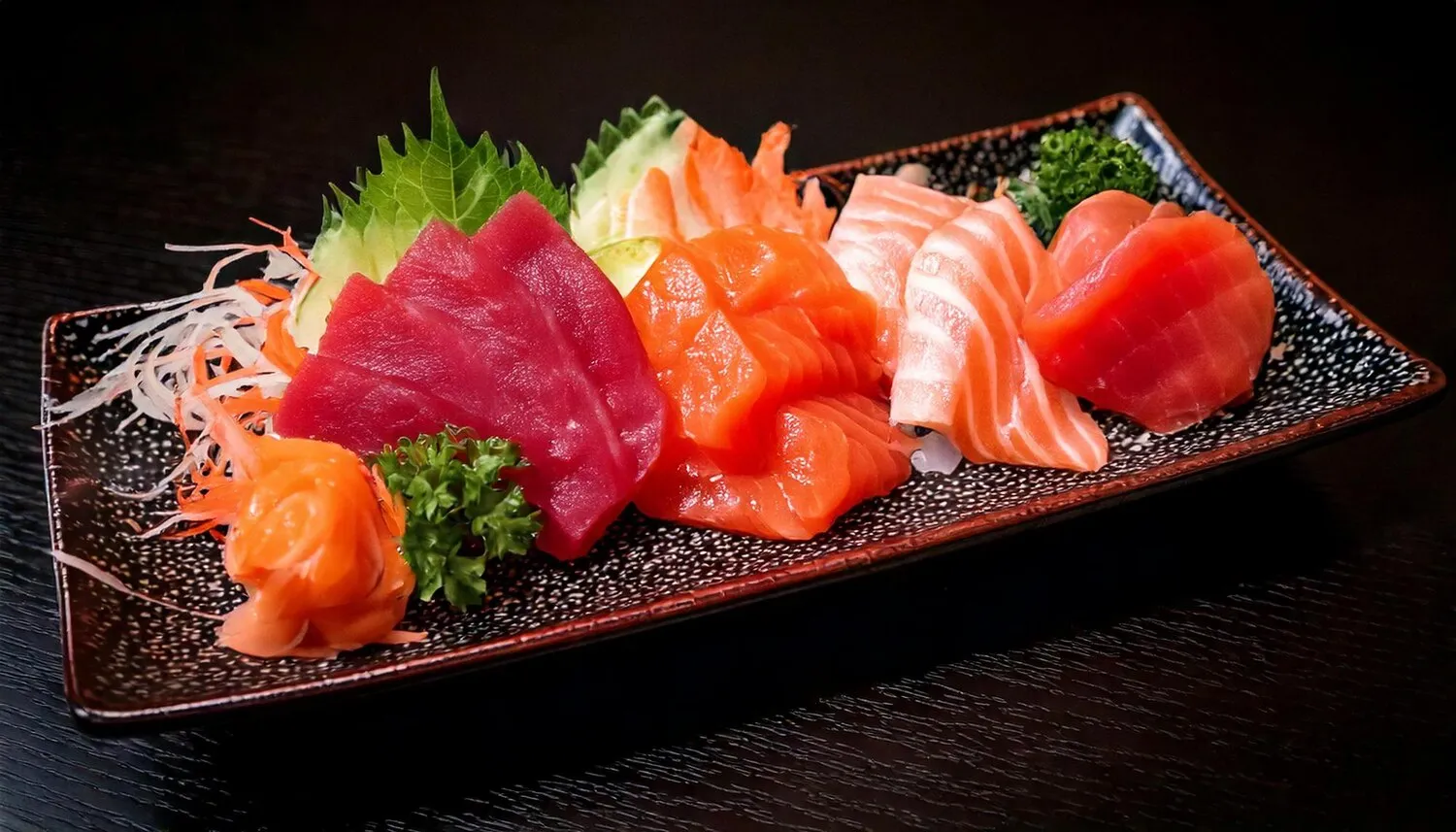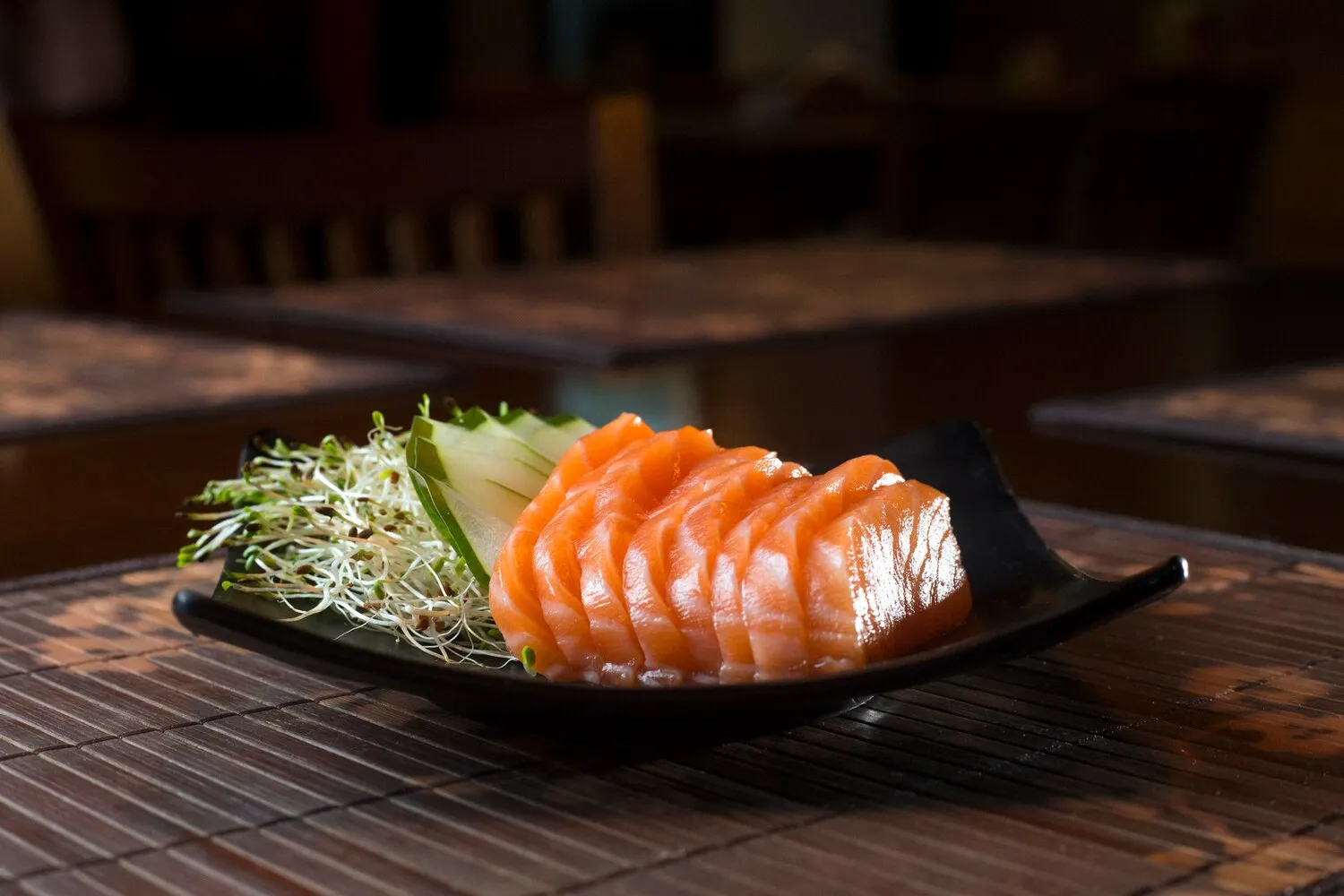
Sashimi
Thinly sliced raw fish.
Nutrition Facts
* The % Daily Value (DV) tells you how much a nutrient in a serving of food contributes to a daily diet. 2,000 calories a day is used for general nutrition advice.
S.A Casa do Sushi
Sashimi's origins can be traced back to ancient Japan, where fresh seafood was a staple. The practice of slicing raw fish likely evolved from preservation techniques and the desire to present food aesthetically. Over time, it transitioned from a simple preservation method to a refined culinary art form, reflecting the Japanese emphasis on freshness, seasonality, and presentation.
Sashimi is deeply ingrained in Japanese culture, representing a respect for nature, seasonality, and culinary artistry. It's often served on special occasions and is seen as a symbol of freshness and purity.
Emphasis on Freshness
The quality of sashimi is paramount, with an extreme emphasis on freshness. Fish is often sourced directly from the ocean and prepared immediately to preserve its flavor and texture.
Seasonality
Japanese cuisine emphasizes seasonality (shun), and sashimi is no exception. Certain fish are considered best eaten during specific times of the year when their flavor and texture are at their peak.
Presentation
The presentation of sashimi is an art form in itself. The fish is carefully sliced and arranged on a plate, often with artistic garnishes, to create a visually appealing dish.
Respect for the Ingredient
Sashimi embodies a deep respect for the raw ingredient. The preparation is minimal, allowing the natural flavors of the fish to shine through. This reflects a broader Japanese philosophy of honoring the gifts of nature.
The essence of sashimi lies in the pure, unadulterated taste of fresh seafood. The flavors are delicate and nuanced, varying depending on the type of fish used.
The primary flavor is the clean, oceanic taste of the raw fish itself. Different varieties offer distinct flavor profiles: tuna (maguro) can be rich and buttery, salmon (sake) is oily and slightly sweet, while yellowtail (hamachi) is firm and subtly flavored. Wasabi provides a pungent, spicy kick that cleanses the palate and enhances the fish's flavor. Soy sauce adds a salty umami element, but it's used sparingly to avoid overpowering the delicate taste of the fish. Garnishes like shiso leaves, daikon radish, and ginger offer refreshing and aromatic counterpoints.
Use Wasabi Sparingly
Apply a small amount of wasabi directly to the fish, rather than dissolving it in the soy sauce. This allows you to control the intensity of the spice and avoid overpowering the fish's flavor.
Dip Lightly in Soy Sauce
Only dip the fish lightly in soy sauce. Over-soaking can mask the delicate flavors of the fish.
Eat in Order of Flavor
It's generally recommended to start with milder-flavored fish and progress to stronger-flavored varieties. This allows you to fully appreciate the nuances of each type of fish.
Chew Thoroughly
Chewing the sashimi thoroughly helps to release its flavors and allows you to fully appreciate its texture.
Palate Cleansers
Use the provided garnishes like ginger and daikon radish to cleanse your palate between different types of sashimi. This helps to refresh your taste buds and prepare you for the next bite.
Explore additional Sashimi dishes and restaurants
Explore SashimiDiscover top dining spots and culinary experiences in Itapema.
Explore ItapemaLearn more about the food culture, restaurant scene, and culinary heritage of Brazil.
Explore Brazil
